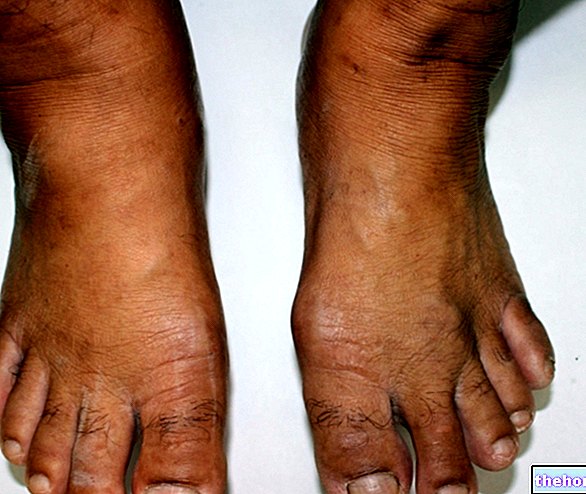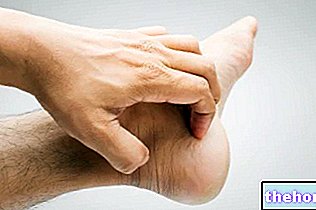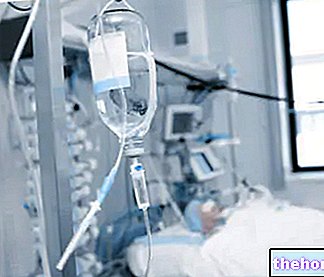Definition
By "Williams Syndrome" we mean a rare genetic disorder, a behavioral disorder that causes cognitive retardation, developmental impairment, associated with cardiac and vascular malformations. The syndrome is named after Dr. Williams, who first described its symptoms around 1960.
Incidence
Williams syndrome is included among the rare genetic diseases, considering that it affects one person in 20,000: unfortunately, the incidence of the disease seems to be underestimated, since it is a "recent" syndrome, or rather, it has only been recognized as such recently.

Causes
The causes of Williams syndrome have been the subject of study for many authors; it appears that the disorder has a genetic origin and is transmitted in an autosomal dominant way. Affected children and parents have a marked physical similarity, although each affected individual may exhibit only some of the clinical features.
The genetic anomaly is given by considerable chromosomal alterations, the triggering reason of which is still unpredictable; however, scholars believe that the deletion (therefore, the loss) of a part of the long arm of chromosome 7 is the main cause responsible for the developmental delay and cognitive disorders typical of Williams syndrome. In this area of the chromosome, the gene responsible for the synthesis of elastin, a structural protein responsible for the elasticity of tissues and organs, also appears to be present: it is clear that, when the mechanisms of production of this protein, the system goes into tilt and the strength and elasticity of the blood vessel walls are lacking.
Williams Syndrome Symptoms
Children with Williams syndrome, as well as adults, have facial feature changes, structural abnormalities, bone fragility, kidney complications, cardiovascular malformations, hearing disorders, growth failure or early pubertal development. motor uncoordination and short-term memory impairment. Those affected by the syndrome are often hyperactive, anxious, restless and complain of difficulty falling asleep.
Some clinical aspects deserve further attention, being essential elements of recognition for Williams syndrome:
- "Face of the elves": patients suffering from Williams syndrome have alterations on the features of the face; in fact, the eyes of the sick patients appear very far apart, as well as the teeth, the lips are noticeably fleshy, the cheeks are chubby, the chin is not very developed and the nose turned upwards. Strabismus is typical of patients with Williams syndrome. , along with microencephaly (poorly developed head) and a voice so hoarse it almost seems muffled.
A patient with Williams syndrome may present the clinical features listed above in a more or less consistent manner, depending on the severity of the syndrome.
- Cardiovascular malformations: heart disorders are very common among Williams syndrome patients (it is estimated that 80% of affected subjects suffer from cardiovascular problems).
Most sick people are hypertensive.
- Hearing Disorders: People affected by Williams syndrome have particularly sensitive hearing; consequently loud noises, screams and confusion could frighten them considerably.
- Cognitive deficits: Williams syndrome causes the sufferer a conspicuous mental and language retardation. Thus, by the time they reach the age of three, affected children tend not to speak, although verbal skills are generally acquired almost completely as they age. The learning deficit can be corrected when treated promptly.
- Premature pubertal development: Secondary sexual characteristics develop earlier than in the healthy population. In fact, the development coincides with approximately 9 years, both for males and females; moreover, the final average height is around 156 cm in males and 147 cm for women, height definitely below the standard values of normality.
The social attitude of those affected by Williams syndrome is peculiar: they tend to be particularly kind and extroverted to strangers. Despite what has been said, affected patients have considerable difficulties in relating to peers.
The Italian Williams Syndrome Association aims to encourage research, in order to inform the population in order to clarify the associated symptoms, the educational and rehabilitative aspects: the future hope is to solve (at least) the most serious ailments that afflict patients with Williams.
Summary
To fix the concepts ...
Illness
Williams syndrome
Description
Behavioral disorder causing cognitive delay and developmental deficit associated with cardiac and vascular malformations
Incidence
Rare disease (1: 20,000 healthy people)
Triggering factors
Autosomal dominant genetic disease: deletion of part of the long arm of chromosome 7 appears to be the main cause
Symptom picture
Alterations in facial features (face of the elves), structural abnormalities, bone fragility, kidney complications, cardiovascular malformations, hearing disorders, growth failure or early pubertal development, motor uncoordination, impaired short-term memory.
Those affected by Williams syndrome are often hyperactive, anxious, restless and complain of difficulty falling asleep.
National organizations
Italian Williams Syndrome Association: informs the population about the symptoms of the syndrome and clarifies the educational and rehabilitative aspects, encouraging research.




























